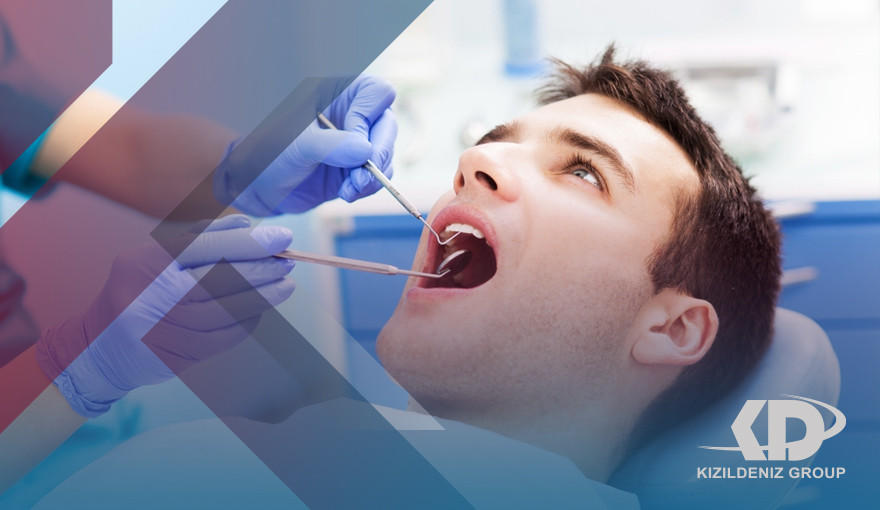What is the specialty of Dental Treatment and Topical Prophylaxis:
Dental pedal treatment is the specialty of dentistry, which includes the prevention, diagnosis, treatment, and maintenance of the health, function, and beauty of supporting tissue diseases and tissue surrounding teeth or their substitutes. (Adopted in May 2018) Gum specialists usually perform gum surgeries such as gum grafts.
History of Dental Treatment and Topical Prophylaxis Specialization:
There's a long history of dental decay. Over a million years ago, semi-humans like Paranthrobus suffered from tooth decay. The largest increases in the prevalence of decay have been associated with dietary changes.
Archeological evidence shows that tooth decay is an ancient disease dating back to prehistoric times. Skulls dating back to 1 million years during the modern Stone Age show signs of tooth decay, including those of the Paleolithic and Mesolithic. The increase in decay during the modern Stone Age can be attributed to the increased consumption of plant foods containing carbohydrates. First, rice cultivation in South Asia is also thought to have caused an increase in tooth decay especially for women, although there is some evidence from locations in Thailand, such as Khok Phanom Di, which shows a decrease in the total percentage of tooth decay with an increase in dependence on rice cultivation.
A Sumeri text dating from 5,500 BC describes "tooth worm" as the cause of decay. Evidence of this belief has also been found in India, Egypt, Japan, and China. The old skulls discovered show evidence of primitive dental work. In Pakistan, teeth dating from about 5500 BC to 7000 BC show almost perfect holes of primitive dental training. Bardia Ibres, an Egyptian text from 1550 BC, mentions dental diseases. During the Sargonid dynasty of Ashur from 668 to 626 BC, the writings of the King's physician determined the need to age due to widespread inflammation. In the Roman Empire, the wider consumption of cooked foods slightly increased the prevalence of tooth decay. Greco-Roman civilization, in addition to Egyptian civilization, had treatments for the pain caused by decay.
The rate of decay remained low during the Bronze Age and Iron Age but increased sharply during the Middle Ages, and periodic increases in tooth decay were small compared to the increase in 1000 AD when sugar cane became more accessible in the Western world. Treatment consists mainly of herbal treatments and magic, but sometimes also includes bloodshed. Barber surgeons at the time provided services including dentures. They learned their training from apprenticeships. These health providers have successfully terminated dental pain and are likely to prevent the systemic spread of infection in many cases. Among Roman Catholics, the prayers of Saint Apollonia, patron of dentistry, were intended to heal the pain caused by dental infection.
There is also evidence of increased tooth decay when indigenous North Americans changed from a strict diet based on hunting and gathering fruits to a diet with corn. Rates also increased after contact with colonial Europeans, which meant greater reliance on maize.
During the European Enlightenment, the belief that "tooth worm" causes tooth decay is no longer accepted in the European medical community. Pierre Fouchard, known for his modern dental father, was one of the first to reject the idea that worms caused dental decay and pointed out that sugar damaged teeth and gums, and in 1850 there was another sharp increase in the prevalence of dental decay. It's thought to be a result of widespread diet changes. Before this time, cervical decay was the most common type of decay, but the increased availability of sugar cane, refined flour, bread, and sweet tea corresponds to more crater decay and cracks.
In the 1890s, W.D. Miller conducted a series of studies that led him to propose an interpretation of dental decay that was influential in current theories. Bacteria have been found to inhabit the mouth and produce acid-melting dental structures when fermented carbohydrates are present. This explanation is known as chemical parasitic decay theory, and Miller's contribution, along with the search for Black by JV Black in 1924 in London, described Kellyanne Clark's spherical bacteria in isolated chains of nephrotic lesions called Streptococcus mutans. Although Clark suggested that this organism was the cause of decay, the discovery was not pursued. Later, in 1954 in the United States, Frank Orland, working with hamsters, showed that tooth decay was transportable and caused by acid-producing nodular bacteria, thus ending the debate about whether tooth decay was caused by bacteria. It was not until the late 1960s that it became generally accepted that the nodal chords isolated from hamster decay were the same as S. mutans.
Dental decay has existed throughout human history, from the first humans millions of years ago, to modern humans.
The importance of studying the specialty of Dental Treatment and Topical Prophylaxis:
Preventive dentistry is particularly important for children, paving the way for healthy teeth and gums as they progress to adulthood. Dental examinations and occupational capacitors can be ensured at an early age before bacteria can accumulate good dental health for life.
Dental Treatment and Topical Prophylaxis courses:
- Chemistry
- Biology Material
- Math
- Physics
Fields of work for the Dental Treatment and Topical Prophylaxis major:
- Dental specialist
Best Universities for Dental Treatment and Topical Prophylaxis in Turkey:
- Marmara University
- Hacettepe University
 FR
FR AR
AR
 Next one
Next one